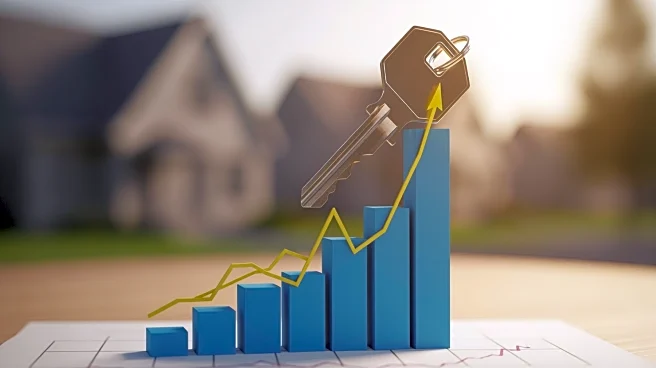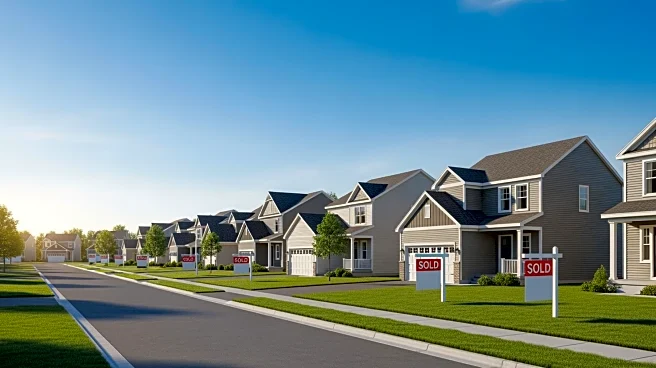What's Happening?
Recent data from Realtor.com indicates that Gaston County, North Carolina, experienced an increase in home sale prices in August. The median sale price for single-family homes rose to $310,000, marking
a 3.3% increase from July's median of $300,000. Compared to August 2024, the price was up 2.8% from $301,500. However, the sales price for condominiums and townhomes decreased by 6.2% to a median of $305,000 from $325,000 in July, and was down 15.3% from $360,000 in August 2024. The number of recorded sales in Gaston County dropped by 25.8% from 392 in August 2024 to 291 in August 2025, totaling $104.4 million in residential home sales.
Why It's Important?
The fluctuations in home prices in Gaston County reflect broader trends in the North Carolina real estate market. Statewide, the median sales price for single-family homes slightly increased to $365,000 in August, up from $363,462 in July. This indicates a steady demand for single-family homes despite a decrease in overall sales volume. The decline in condominium and townhome prices suggests a shift in buyer preferences or market saturation in these segments. These trends are significant for real estate investors, homeowners, and potential buyers as they navigate the evolving housing market dynamics.
What's Next?
As the real estate market continues to adjust, stakeholders such as real estate agents, investors, and policymakers will likely monitor these trends closely. Potential buyers may find opportunities in the declining prices of condominiums and townhomes, while sellers of single-family homes might benefit from the rising prices. The decrease in sales volume could prompt discussions on housing affordability and availability, influencing future policy decisions and market strategies.
Beyond the Headlines
The data highlights the importance of understanding local market conditions and the impact of broader economic factors on real estate. The decrease in sales volume and fluctuating prices may reflect economic uncertainties or shifts in consumer preferences. Long-term implications could include changes in housing development strategies and investment priorities, as stakeholders adapt to these evolving market conditions.











